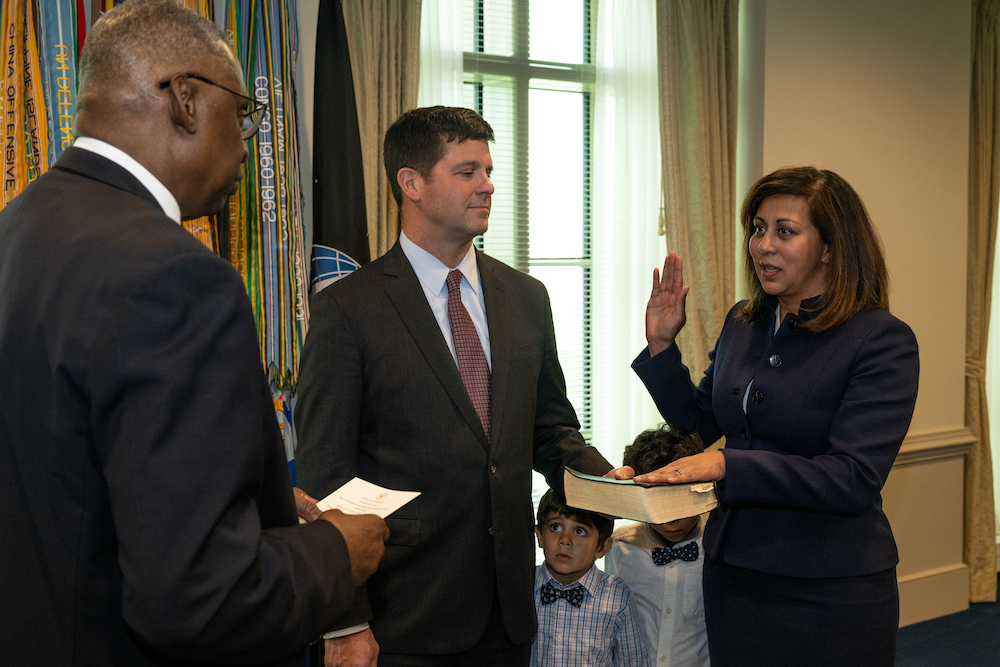VA Addresses Challenges, Opportunities in Health Records Transformation
Modernizing the VA’s electronic health records database could streamline the care process, assuming technical complexities are carefully managed.

Representatives from the Department of Veterans Affairs see great opportunity in an upcoming transfer of the agency’s electronic health records from the homegrown VISTA platform to a new database.
Having signed a $10 billion contract in 2018, the agency is expected to work in tandem with Cerner Corporation over the following decade to modernize its electronic health records system with the intent of facilitating data sharing across the VA and community health providers that serve America’s veterans.
First debuted in 1977, VISTA has been responsible for storing patient information from U.S. veterans who have sought treatment through any of the VA’s care verticals. With the VA serving 9 million veterans annually, this renders VISTA one of the country’s most widely used electronic health records platforms. The stakes of adapting to a new system are considerable, which leaves both notable risks as well as potential to transform VA’s broader information management, noted VA panelists at the OSEHRA Open Source Summit Wednesday.
The legacy VISTA system is currently distributed as an open-source platform through OSEHRA, and speakers evinced respect for the database’s utility while acknowledging that modernization could improve the quality of veterans care nationwide. Dr. Jonathan Nebeker, acting VA chief medical informatics officer, emphasized that the ultimate success of the VISTA transition will be determined through impact on patient outcomes rather than on more abstract technical parameters. Outlining a broad roadmap for EHR transformation, Nebeker aligned the VISTA overhaul with the VA’s renewed emphasis on reforming veterans care — mentioning that a streamlined health records system could allow VA physicians to dedicate greater attention to their patients.
Nebeker underscored an essential criteria applied to all projects he oversees as acting CMIO — ensuring they positively impact the lives of veterans within the first year of development. Irrespective of a product’s technical sophistication, he maintained it cannot be judged a success unless it shows demonstrable improvements in the care process itself.
As an example of this link between IT innovation and process reform, Nebeker highlighted a recent machine-learning initiative that was used to identify and analyze canceled radiology orders — which helped determine the reason for these lapses and bolstered accountability in VA care. Expanding VA EHR beyond the VISTA system provides further opportunities to leverage technically advanced procedures to improve the intake-to-treatment process for America’s veterans.
Dr. Aaron Drew, chief engineer and architect of VA’s Enterprise Supply Chain Modernization (eSCM) Program, expanded on this theme of using database modernization to streamline veterans health care while recognizing the inherent challenges of transforming an institutionally ingrained legacy system. Drew noted that in certain VA care centers, financial records are still maintained through outdated databases or even standalone spreadsheets. A records standardization process will require immense effort and care to ensure none of this vital information is lost, but could also radically expedite the records transfer process between VA care centers. Drew described this push as part of the broader effort to remove the siloed functionality of VA services and move toward a more integrated IT paradigm.
A panel of private sector representatives directly addressed the challenges inherent in moving such an expansive information repository to the Cerner database, putting emphasis on the technical hurdles that will need to be addressed throughout the process. Ben Cushing, field CTO for federal health at Red Hat, underscored the extensive process automation already present in VISTA, mentioning this will be difficult to replicate quickly within a new database. Ensuring data is exchanged with adequate speed between separate electronic health record systems was also held as a standout priority. Panelists noted that developers may need to rely on third-party resources to ensure patient information is preserved and transferred without error, emphasizing the need for compatible data dictionaries and API that likely cannot be met by the existing Fast Healthcare Interoperability Resources (FHIR) framework.
Another challenge that private sector representatives discussed was the complexities of transforming VA electronic health records over a yearlong timeframe, particularly in light of the innovation and changes across the IT landscape likely to occur throughout the contract period. Bo Dagnall, chief technologist and strategist for digital health at Perspecta, proposed that the VISTA system may not be fully abandoned in the immediate time frame, as relying on the preexisting EHR system will be necessary for database stability as its component parts are overhauled.
Ultimately, the success of the VA electronic health record modernization appears to hinge on reconciling process complexities with the focus on simplifying the veterans care experience. The VA’s renewed emphasis on human-centered design has necessitated complex data analysis to reform its expansive care networks. Assuming diligent efforts to replicate VISTA’s core functionalities while refining the VA’s database management, the transformation has the potential to broadly improve the intake and care process for America’s veterans.
This is a carousel with manually rotating slides. Use Next and Previous buttons to navigate or jump to a slide with the slide dots
-

How Tech Enables Environmental Justice at EPA
The agency wants to eliminate bias and establish new tech standards to reduce greenhouse gas emissions.
39m listen -

The CAIOs Leading Responsible AI Development Across Government
Since the White House's AI executive order, federal agencies are in the process of naming chief artificial intelligence officers.
7m read -

How TMF is Helping Agencies Accelerate Tech Modernization
The program launched a new AI pilot to expedite TMF applications as agency leaders urge more to consider applying for funds.
4m read -

Defense Board to Pitch Solutions for Closing Tech Talent Gaps
Defense Innovation Board members cite need to modernize people management the same way government modernizes technology.
4m read




